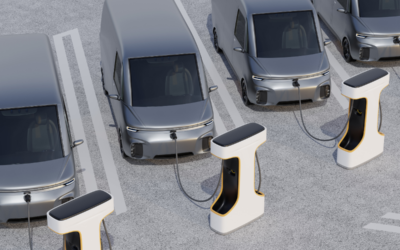The global push for net-zero emissions is reshaping industries, and transportation—responsible for a significant portion of global greenhouse gas emissions—is at the forefront of this transformation. Fleet operators are under increasing pressure to reduce their carbon footprint, and telematics has emerged as a pivotal tool in this endeavor.(zeromission.io)
Understanding Telematics in the Context of Net-Zero
Telematics combines telecommunications and informatics to monitor and manage vehicles remotely. By collecting real-time data on vehicle location, speed, fuel consumption, and driver behavior, telematics provides actionable insights that can drive significant improvements in efficiency and sustainability.
Key Ways Telematics Supports Net-Zero Goals
1. Reducing Fuel Consumption and Emissions
Telematics systems can identify inefficient driving behaviors such as excessive idling, harsh braking, and rapid acceleration. By addressing these behaviors through driver training and feedback, fleets can achieve substantial fuel savings and emission reductions. For instance, studies have shown that implementing telematics can lead to a reduction in fuel consumption by up to 25% and decrease idling by up to 30%, directly lowering CO₂ emissions. (Geotab, netstar.co.za)
2. Optimizing Routes for Efficiency
Advanced telematics solutions offer route optimization features that consider traffic conditions, road types, and delivery schedules. By selecting the most efficient routes, fleets can minimize travel time and distance, leading to lower fuel usage and emissions.
3. Facilitating the Transition to Electric Vehicles (EVs)
Telematics plays a crucial role in managing EV fleets by monitoring battery levels, charging status, and energy consumption. This data helps in planning charging schedules and routes, ensuring that EVs are used effectively and sustainably.
4. Enhancing Maintenance and Vehicle Health
Predictive maintenance enabled by telematics ensures vehicles operate at peak efficiency. By monitoring engine performance and other critical systems, fleets can address maintenance issues proactively, preventing breakdowns and reducing emissions associated with poorly maintained vehicles.
Comparative Overview: Traditional vs. Telematics-Enabled Fleet Management
| Aspect | Traditional Fleet Management | Telematics-Enabled Fleet Management |
|---|---|---|
| Fuel Efficiency | Reactive improvements | Proactive monitoring and optimization |
| Route Planning | Manual and static | Dynamic and data-driven |
| Vehicle Maintenance | Scheduled or reactive | Predictive and condition-based |
| Emissions Tracking | Estimated | Real-time and accurate |
| Driver Behavior Monitoring | Limited | Comprehensive and continuous |
Real-World Impact: Case Studies
Several organizations have successfully leveraged telematics to advance their sustainability goals. For example, Shell’s Fleet Decarbonisation Report highlights the importance of leveraging data to achieve net-zero emissions goals in supply chain fleets. Similarly, companies like Geotab have demonstrated that telematics can reduce fleet fuel consumption by up to 10% through improved driver behavior and route optimization. (sustainabilitymag.com, Geotab)
Implementing Telematics for Sustainability
To effectively utilize telematics in achieving net-zero targets, fleet operators should:
- Assess Current Operations: Understand baseline fuel consumption and emissions.
- Set Clear Objectives: Define specific, measurable sustainability goals.
- Choose the Right Telematics Solution: Select a system that aligns with operational needs and sustainability targets.
- Train Staff: Ensure drivers and managers understand how to use telematics data to improve performance.(Teletrac Navman)
- Monitor and Adjust: Regularly review data to identify areas for improvement and adjust strategies accordingly.(zeromission.io)
So…
Telematics is more than a fleet management tool; it’s a catalyst for sustainable transformation. By providing real-time insights into vehicle performance and driver behavior, telematics empowers organizations to make informed decisions that reduce emissions and drive progress toward net-zero goals.
Ready to transform your fleet’s sustainability journey? Discover how Traknova’s advanced telematics solutions can help you achieve your net-zero targets efficiently and effectively.(Geotab)










